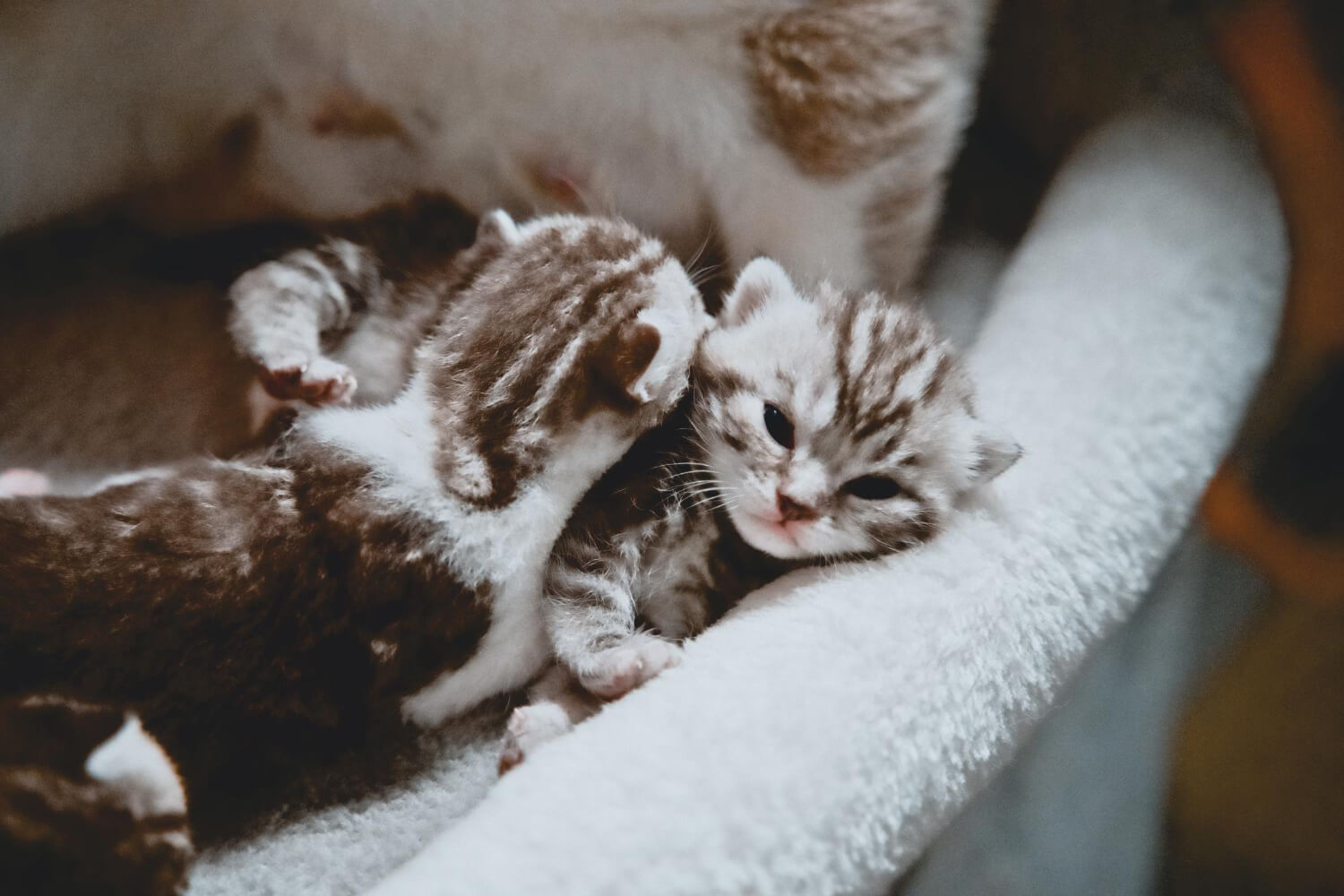What to Do With a Pregnant Feral Cat?
Almost every spring someone close to me finds a pregnant feral cat. I know how encountering a pregnant feral cat can stir up a mix of emotions. What to do with a pregnant feral cat, how can I help them?
These feral cats live independently outdoors, avoiding human contact, making their care unique compared to domestic pets.
However, helping a pregnant feral can greatly improve her and her litter of kittens’ chances for survival.
Here’s what you can do to help a pregnant feral mom and her soon-to-arrive young kittens.
Table of Contents
1. Providing Basic Needs: Food and Water
The first step in caring for a pregnant cat is making sure that she has access to consistent food and water. Pregnant and nursing mothers need additional nutrition, so high-quality wet food, combined with dry kibble, will give her the necessary energy to stay healthy.
Place these supplies in a quiet area where she feels safe, ideally at a distance to avoid scaring her away.
2. Observing and Planning: Will You Intervene?
When dealing with feral cats, it’s important to assess whether you want to intervene or let nature take its course. If you’re familiar with trap-neuter-return (TNR), this can be a proactive option. In TNR, feral cats are humanely trapped, spayed or neutered, vaccinated, and returned to their territory, preventing future litter. However, with a pregnant cat, it’s best to wait until after she gives birth and weans her kittens before spaying her.
If the cat is not too far along in her pregnancy, some TNR programs may perform a spay-abortion, but this decision must be made carefully and ethically in consultation with local shelters or veterinarians.
3. Creating a Safe Space
When the pregnant feral is close to delivering, providing her with a safe and secluded space will be beneficial. You can try to offer her shelter, such as an outdoor cat shelter or access to a shed or garage.
Keep in mind that feral moms are often highly protective of their young kittens and may hide them well after giving birth. Approach her and her kittens cautiously, and avoid handling them, as this may cause the mother to relocate her litter to a hidden area.
4. Caring for the Litter of Kittens
Once the litter of kittens is born, it’s essential to monitor them but from a distance.
Feral moms are usually capable of caring for their young kittens as long as they have access to food, water, and shelter. If the mother seems to be in distress or the kittens appear sick, contacting a local rescue or shelter is the best course of action.
When the kittens are about 4-6 weeks old, you can consider trapping them for socialization and adoption, while the mother undergoes TNR to prevent future litters. Socializing feral kittens at a young age can help them adapt to life with humans, making it easier to find them loving homes.
5. Post-Pregnancy TNR for the Mother Cat
After the kittens are weaned (around 8-10 weeks), the feral mom can undergo trap-neuter-return. Spaying her will ensure that she won’t continue producing more litter of kittens, contributing to the population of feral cats.
After her surgery, she can be returned to her outdoor home, where she’ll be healthier and less stressed without the burden of repeated pregnancies.
Conclusion on What to Do With a Pregnant Feral Cat
Helping a pregnant feral cat and her young kittens can be incredibly rewarding.
You can significantly improve the health and well-being of the feral cats in your neighborhood by giving food, water, and shelter, monitoring the situation, and contemplating trap-neuter-return for the mother after she weans her kittens.







